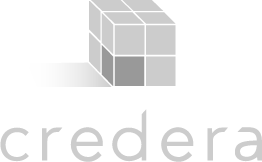by Alisha Janes
 While observing a classroom lesson may not always be an option when considering a prospective school, if you have the opportunity, you should take it. Seeing a teacher and class in action provides an excellent vantage point from which to measure whether a school or a particular class is a good fit for your child.
While observing a classroom lesson may not always be an option when considering a prospective school, if you have the opportunity, you should take it. Seeing a teacher and class in action provides an excellent vantage point from which to measure whether a school or a particular class is a good fit for your child.
I am a former teacher and instructional coach, and here are three things that I look for when I visit a classroom:
1. Welcoming Classroom Environment:
Observing how welcoming the environment feels should be quite straightforward. If you were to ask students in the room if being in this class felt a little bit like being in a family, the answer should be yes. Are the students’ names posted around the room? Does the teacher ever talk to students about their personal lives or interests during spare moments in the day?
2. Effective Routines:
Having effective classroom routines does not require that the class moves in perfectly straight and quiet lines; it really just means that no unnecessary time is lost doing things like taking attendance or lining up. There should be a feeling of routine, that students already know what to do and simply get the job done quickly and efficiently. For example, do students know what to do when it is time to line up or immediately when they arrive in the room? Do students have classroom jobs that they do with little or no instruction?
3. Rigorous & Engaging Lessons:
Judging whether a lesson is rigorous and engaging can be more difficult. Generally, the purpose of the lesson should be quite obvious; you should be able to easily say what the teacher was trying to teach and what they students should be able to do or know when the lesson is over. It should also be obvious that the teacher had a plan in place, even if they end up adjusting course during the lesson in order to make sure students understand. Lastly, does the teacher ensure that all of the students are actively participating?
Of course, there is no one perfect recipe for a successful classroom environment. There are an infinite number of ways that a teacher can achieve a welcoming environment or effective routines. In the end, it does not matter the specific way that these tasks are accomplished, just that the desired result is achieved. This list is also far from comprehensive. There are many more factors that go into creating an effective classroom environment. Here are two more comprehensive lists that can help you see what to look for when observing in a classroom. Another excellent resource is Doug Lemov’s book and corresponding website, which list practices common among the country’s most effective teachers.
Alisha Janes is a fellow at Colorado Succeeds and is currently pursuing a Masters of Public Administration at the University of Colorado at Denver. Alisha’s previous experience include: coaching new teachers, teaching intervention lessons, and three years of teaching a Bilingual 5th grade class in Houston, TX.
 |
| 

